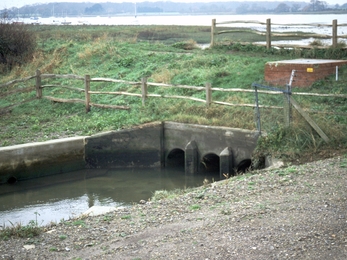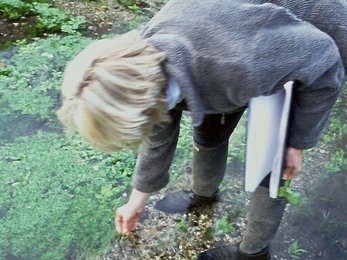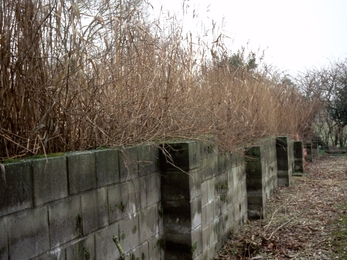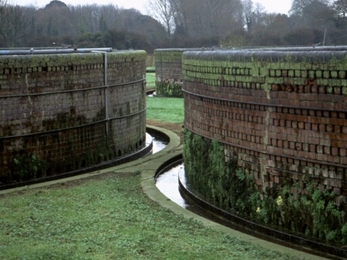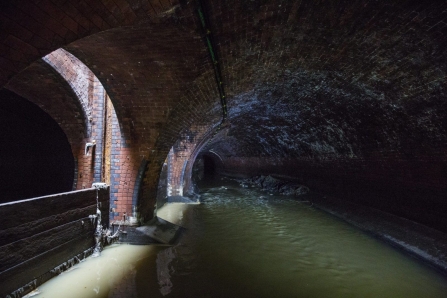Even as the South Coast draws its collective breath after Storms Ciara and Dennis, Storm Jorge is set to imminently hit UK shores. Those further West along the Severn Estuary are manning the pumps, as the latest man-made river defence failed last night. This got me thinking about how we manage our watercourses: we have a myriad of ‘watery roads’, and being an island most of our rivers ‘exit’ the country by way of the coast, flowing out into the sea.
In 2003, while I was a student at Chelsea College of Art, I was also a part-time tutor at West Dean College near Chichester. I obtained permission, along with fellow student Malisa Sledmere, to create an artistic installation on the stretch of the River Lavant that runs through the college's gardens. The river is actually a winterbourne - a kind of stream that appears only when the underground aquifer fills to capacity and gushes forth in numerous springs, which join together to form the river. It can disappear completely during the summer months, as our installation was to discover, yet be in full flood in February.
I had no idea what a winterbourne was before Malisa and I embarked on our installation, which was entitled 'Stream of Consciousness'. Thorough research is mandatory for any Master's degree, so like good students we studied the Lavant from its source to its estuary in Chichester Harbour. We walked its upper reaches with my sister-in-law Mary Ann Canning, a very knowledgeable landscape artist and botanist. She identified the many plants growing there, in some areas choking the shallow water, and attributed the excessive growth to fertiliser run-off from farms. Other parts of the Lavant had been canalised, with vertical concrete blocks replacing the river banks. Here the water flowed at high speed as if on a motorway; there was no opportunity for wildlife to linger, feed, or roost.


